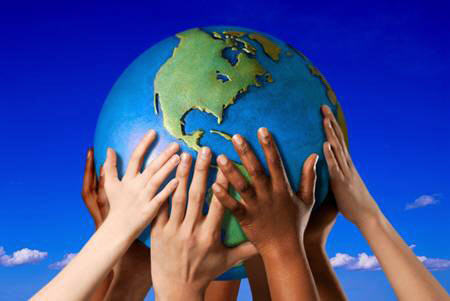People From Different Cultures Read Facial Expressions Differently
Deborah Swallow | August 14th, 2009
Most Westerners get confused about when a “Yes” means “Yes” when interacting with people from the East. Now, it seems there is more to get confused about, with a study revealing that even facial expressions can be a source of confusion too. This time it is the East Asians who have a tendency to misinterpret more than Westerners.
It would appear that people from different cultural groups observe different parts of the face when trying to interpret expressions and this leads to the misinterpretation. East Asians tend to focus on the eyes of the other person, while Western subjects take in the whole face, including the eyes and the mouth. Westerners tend to correctly identify the emotions in both white and Asian faces. East Asians are more likely than Westerners to read the expression for “fear” as “surprise”, and “disgust” as “anger”.
This is even reflected in the differing “emoticons” – typographical characters used to create rudimentary faces in emails or text messages – used by the two cultures. Eastern versions focus on the eyes, and western ones change the mouth to depict varying emotions.
The findings suggest that the communication of emotions is more complicated than had previously been believed. Rachael Jack, the psychologist who led the study, said: “Understanding facial expressions of emotion is an essential skill for effective human interaction and although many consider facial expressions to be the universal language of emotion, our research questions this and highlights the true complexities of cross-cultural communication.”
However, it is important to highlight here that in eastern cultures it is less socially acceptable to display negative emotions so they are not atuned to interpret negative facial expressions as they are rarely seen. Western societies are very individualistic, allowing us to express personal opinions explicitly – good or bad. This is not acceptable in the East.
All in all, the study adds weight to what interculturalists have known for years: that what have always been considered to be “universal” expressions (by those in the West) do not take into account cultural differences.
The Study: Researchers at Glasgow University compared the way 13 Western Caucasians and 13 Korean, Japanese and Chinese participants interpreted the same set of facial expressions depicting seven main facial expressions: happy, sad, neutral, angry, disgusted, fearful and surprised. They used eye movement trackers to monitor where the participants were looking when interpreting the expressions. A computer programme given the same information from the eyes as the East Asian observers was similarly unable to distinguish between the emotions of disgust and anger, and fear and surprise.
The paper, entitled “Cultural Confusions Show that Facial Expressions are Not Universal,” is published today in the journal Current Biology. It states that the Eastern participants used a culturally specific decoding strategy that was inadequate to reliably distinguish the universal facial expressions of fear and disgust. It concluded that information from the eyes is often ambiguous and confusing in these expressions, with consequences for cross-cultural communication and globalisation.



 Hello, I'm Deborah Swallow and, for the last fifteen years, I've worked in over thirty countries addressing the complexities of people working internationally across multiple cultures, so individuals and organisations alike can gain an authentic competitive edge and win in international markets.
Hello, I'm Deborah Swallow and, for the last fifteen years, I've worked in over thirty countries addressing the complexities of people working internationally across multiple cultures, so individuals and organisations alike can gain an authentic competitive edge and win in international markets. 